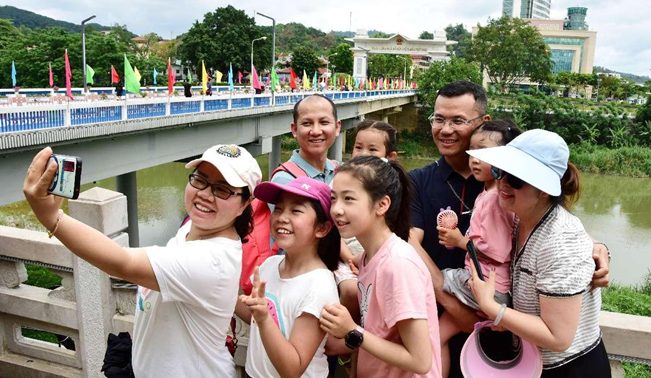At the headquarters of the Liucheng Experimental Primary School in Liucheng county, Liuzhou city, south China’s Guangxi Zhuang Autonomous Region, the bell signaling a break rang.
Soon after, accompanied by lively music, more than 1,300 students held flower fans and performed Caidiao opera, synchronizing their movements with the rhythmic beat of the drums.

南京:非遗项目进校园 传统文化润童心
5月27日,在南京市秦淮区武定新村小学,学生在做“兔子灯”。
近年来,江苏省南京市秦淮区武定新村小学围绕非遗项目“秦淮灯彩”开展一系列教育实践活动,构建丰富多元的秦淮灯彩课程,实现非遗文化保护与文化教育相结合,帮助学生熟悉非遗文化,感受非遗魅力。
新华社记者 李博 摄
Caidiao opera, a traditional local opera, was recognized as a national intangible cultural heritage in 2006.
At one point, Caidiao opera was on the brink of extinction. In 2010, Zhou Xisheng, a professional playwright from a Caidiao opera troupe in Guangxi, returned to his hometown to begin researching about Caidiao opera. He gathered a group of elderly performers in a local village and established a Caidiao opera troupe, gradually revitalizing the art form.
Recognizing the importance of preserving and passing down the art of Caidiao opera to younger generations, Zhou and his wife started offering free Caidiao opera classes to children in 2013. They dedicated their time during school breaks and weekends to teach primary school students the art of Caidiao opera.
Over time, more people joined in efforts to protect and carry on Caidiao opera. Liucheng Experimental Primary School integrated Caidiao opera melodies into their campus radio exercises, making them simple and easy for students to learn. This not only enriched the school’s cultural life but also provided students with the opportunity to experience the captivating allure of the intangible cultural heritage.












